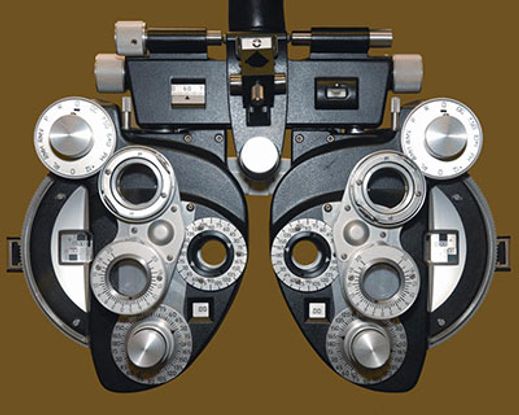Astigmatism Diagnosis and Treatment
Your eye doctor will test you for astigmatism as part of your comprehensive eye exam.
Your eye doctor will test your visual acuity. He or she will ask you to read letters on an eye chart. This will determine the clarity of your vision at certain distances.

A phoropter helps your eye doctor find out your prescription for glasses or contact lenses.
Astigmatism Prescription Measurement Machines
Your eye doctor may use several devices during your exam:
- A phoropter helps determine how to shape a lens to correct your vision. The doctor has you look through a series of lenses in front of your eyes, and asks which ones make your vision better. Based on your answers, the doctor determines the lenses that provide the clearest vision.
- Your doctor can also use an autorefractor to determine the corrective lenses you need. The autorefractor shines light into the eye and measures how it changes as it bounces off the back of the eye.
- A keratometer measures the curve of your cornea. Your eye doctor may also use corneal topography. This provides more information about the shape of the surface of the cornea.
These tests help your eye doctor to precisely diagnose and measure your astigmatism.
Astigmatism Treatment
Usually, you can correct mild to moderate astigmatism with eyeglasses or contact lenses. Glasses or contacts correct astigmatism by compensating for uneven curves in your cornea and lens.
Rigid contacts (RGP, for rigid gas permeable, or GP, for gas permeable) used to be the only contact lenses for astigmatism. This is no longer true. Now, soft lenses called toric contact lenses can correct astigmatism. These lenses may be appropriate for some people. If you have severe astigmatism, rigid contacts or glasses may be a better option. Your eye doctor will discuss your lens options with you.
Surgery, including LASIK, may be an option for some people with astigmatism. Your ophthalmologist can discuss refractive surgery options with you.